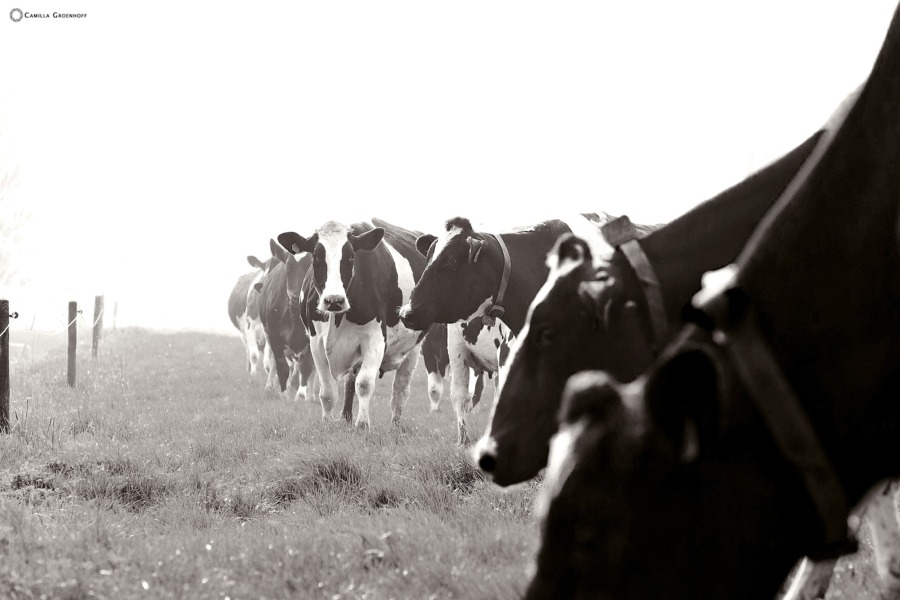Impact of heat stress on animal performance
Due to climate changes, heat stress will occur more often in the Netherlands. In combination with the production restrictions and the shift from the highest possible production to the best possible milk production, this will be a challenge for the Dutch dairy farmer. Previous practical studies into the consequences of heat stress for Dutch dairy farms have been limited and it was therefore unclear what the exact consequences of heat stress are. Camilla Groenhoff, a student at Van Hall Larenstein University of Applied Sciences, has devoted her graduation thesis to the consequences of heat stress on Dutch dairy farms for UNIFORM-Agri BV.
Heat stress
Heat stress occurs when the upper critical temperature is exceeded. When this occurs, the animals are not sufficiently able to lose their heat, causing the body temperature to rise. Due to heat stress, growth, health, milk production and reproduction no longer have priority in the body of the animal suffering from heat stress. The most commonly used indicator of heat stress is the Thermo-Humidity Index (THI), a formula that combines temperature and humidity. The most commonly used threshold for heat stress is a THI of 72. The study focused on anonymized data from 600 Dutch dairy farms for 2018 and 2019. The themes examined are milk production, udder health and reproduction. The companies that score better on the various animal performances examined seem to be least affected by heat stress. This is a striking result because the animals with better animal performance have a greater heat production and would therefore be more sensitive to heat stress.

Impact on milk production
Milk production decreases when THI exceeds 70. This already happens at a temperature from 22 degrees. In times when the THI exceeds 80, milk production can drop to 38%. There is a clear 48-hour delay between the rise in THI and the drop in milk production. The dairy cows in the middle of their lactation (80 – 120 days on the milk) are most sensitive to heat stress. The old milking cows have a lower milk production and are therefore less sensitive to heat stress.
Dairy cows in early lactation are less dependent on feed intake. As a result, they produce less heat per kilogram of milk produced. Second calf cows also seem to be most sensitive to heat stress. The third and older calf cows are least affected by heat stress. It takes until November before milk production starts to rise again. In October, milk production is therefore on average 2 kilograms lower than in January. So the effects of heat stress last longer than just during the periods when it’s really hot.
Effects on udder health
The tank cell count has been examined for udder health. The tank cell count starts to rise from March and continues to rise until August. Then the tank cell count decreases again. A strong correlation has been found between the tank cell count and the THI.
The companies with a high tank cell count (> 250) rise on average a lot higher than the companies with a low tank cell count (<100). The companies with a higher tank cell count probably have more animals with a cell count above 250. These animals in particular are causing the large increase during the summer months.
Impact on reproduction
Various index numbers have been investigated for reproduction. The main results are that the insemination rate and conception rate are negatively affected. For example, decreases of 2 – 63% were found for the insemination rate, and the conception rate decreased by 1 – 60%. The insemination rate decreases because the length and intensity of the heat decreases. As a result, the animals don’t show the heat that well.
The conception rate decreases because less animals become pregnant. This has to do with the quality of the eggs, which is negatively influenced by heat stress. As a result, cows that calve in the spring and summer have more difficulty getting pregnant than cows that calve in the fall or winter. It takes an average of two cycles to recover from heat stress, so the negative effects of heat stress can last until autumn.

Conclusion
Animal performances are therefore influenced due to heat stress, as the THI exceeds the upper critical temperature for dairy cows. Milk production declines significantly, bulk tank somatic cell count increases significantly, and reproduction is affected as well. The effects are, however, less excessive as found in other research. Because a data study identifying the consequences of heat stress on Dutch animal performances has not been conducted before, this research also contributes to the overall knowledge about heat stress in the Netherlands.


